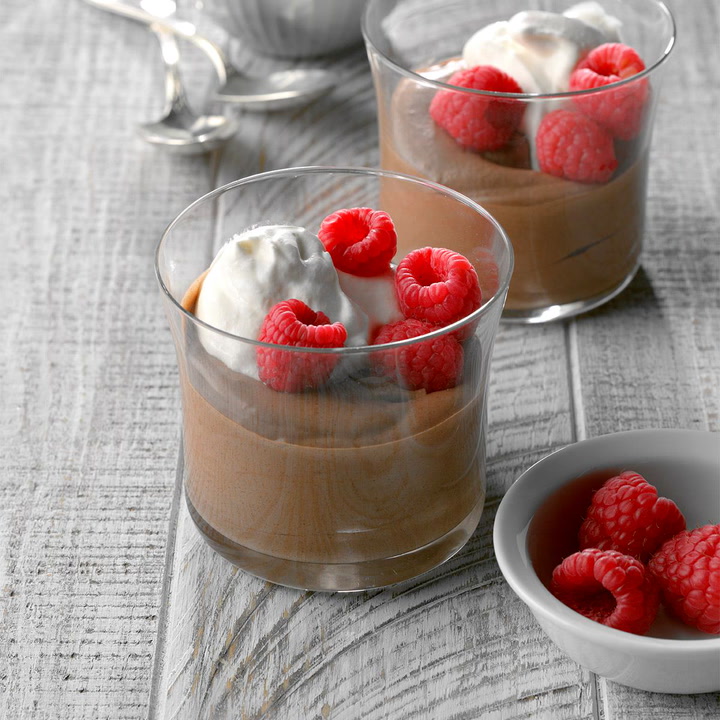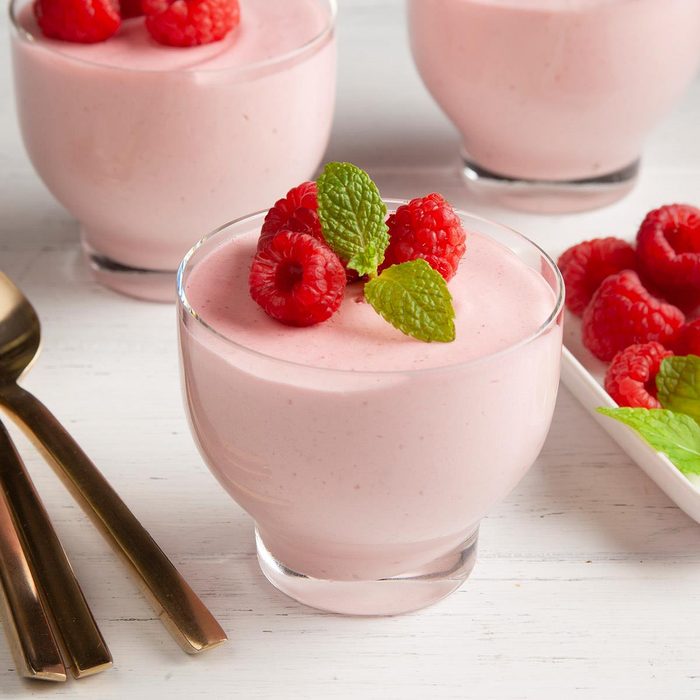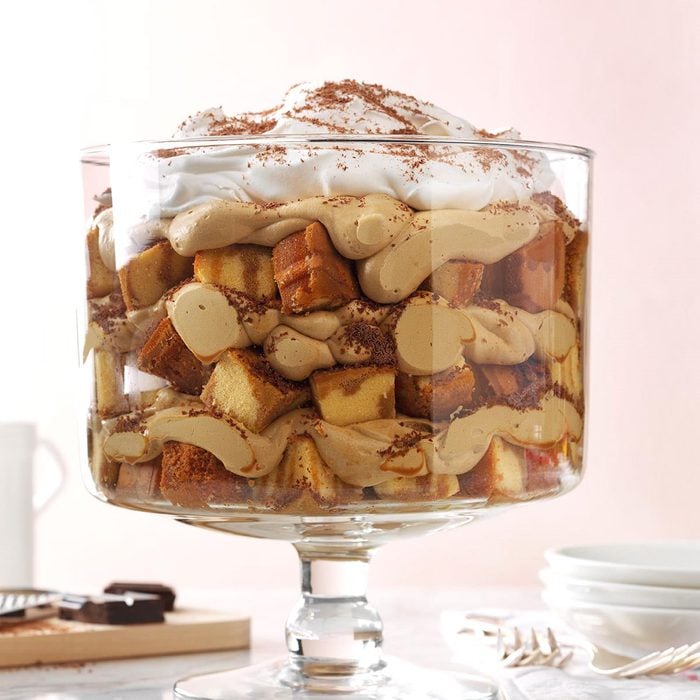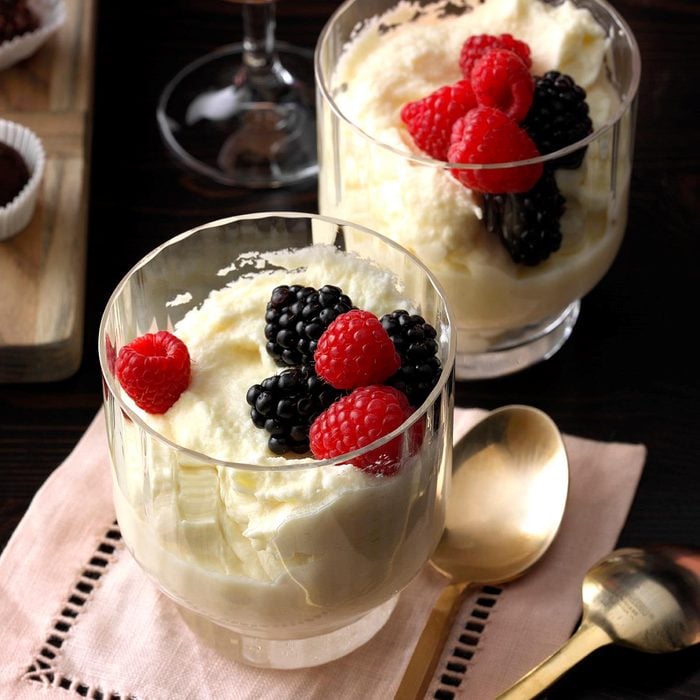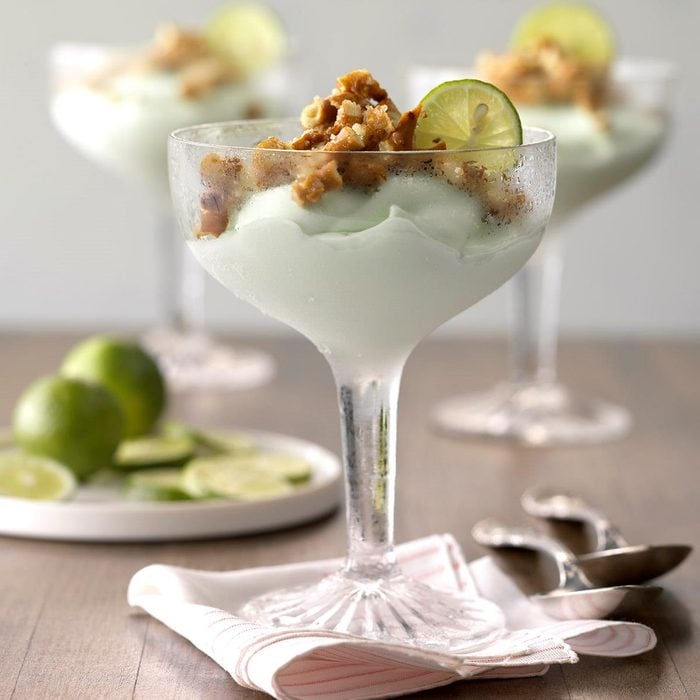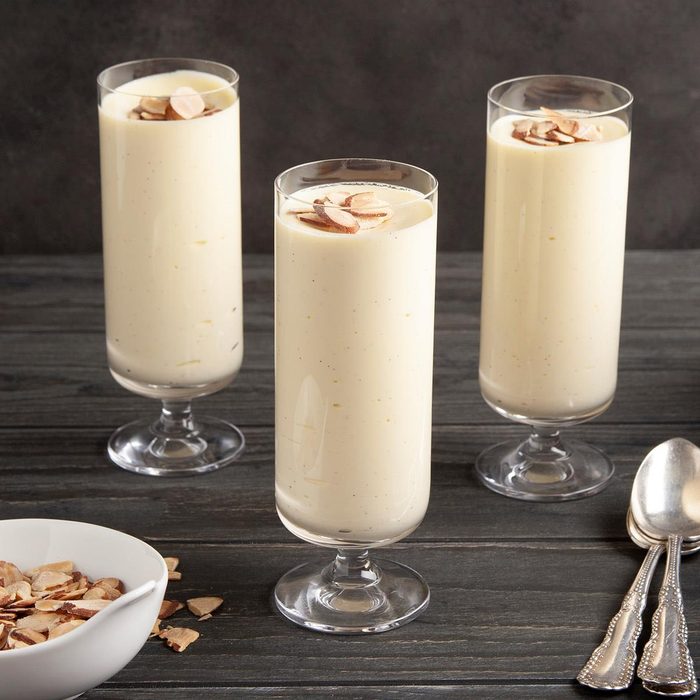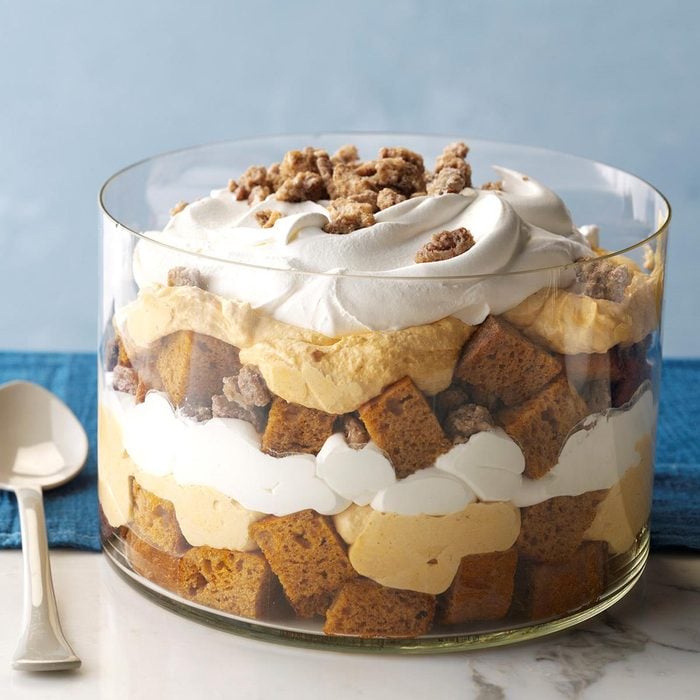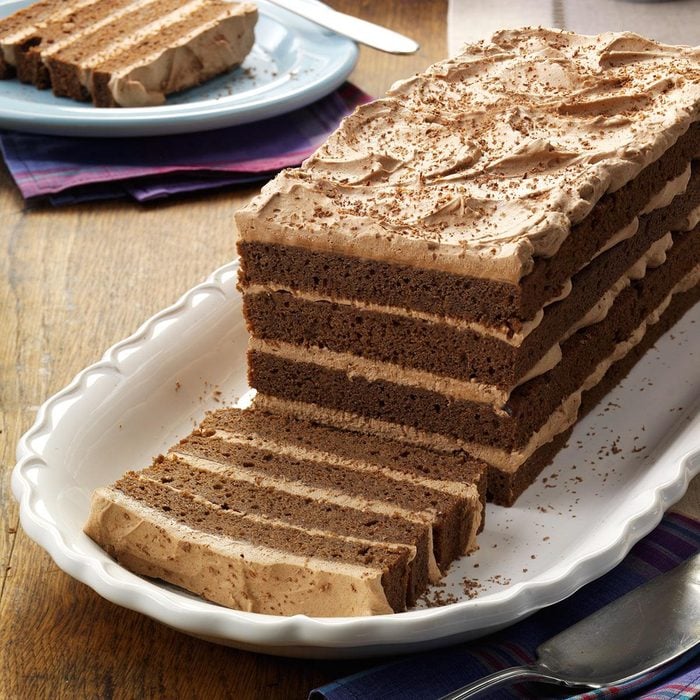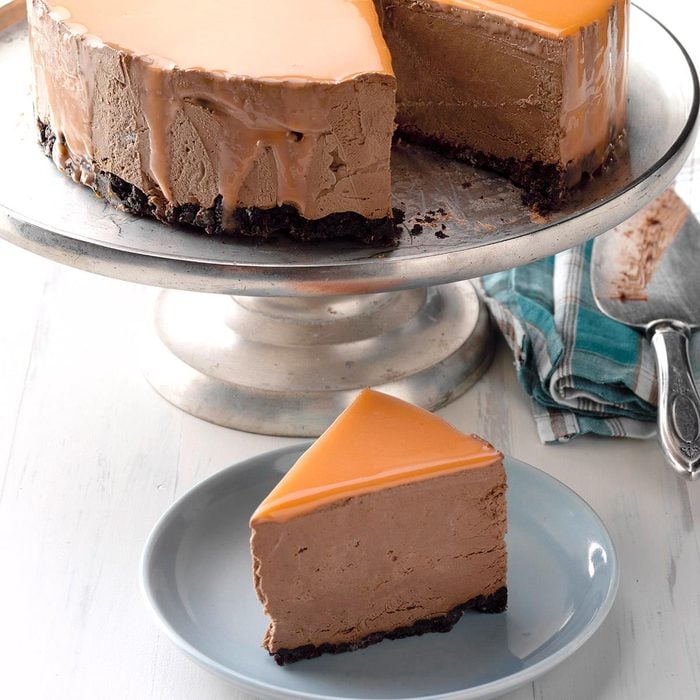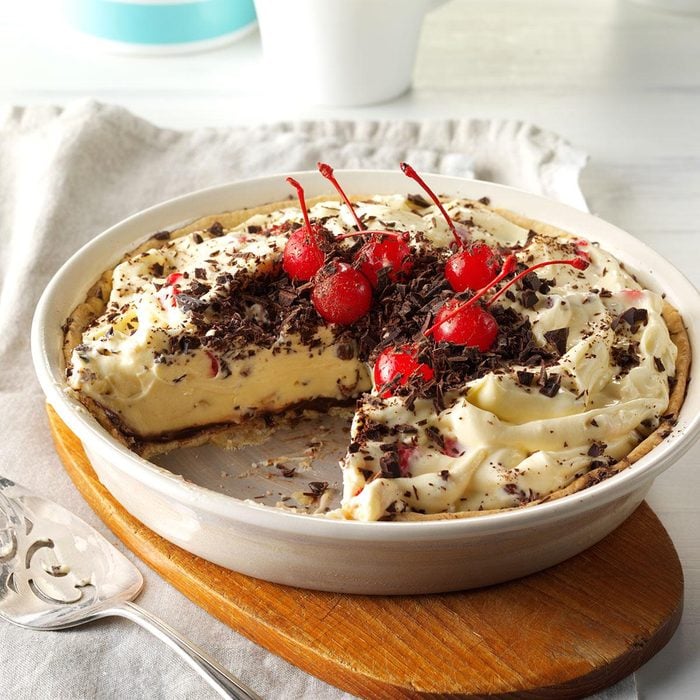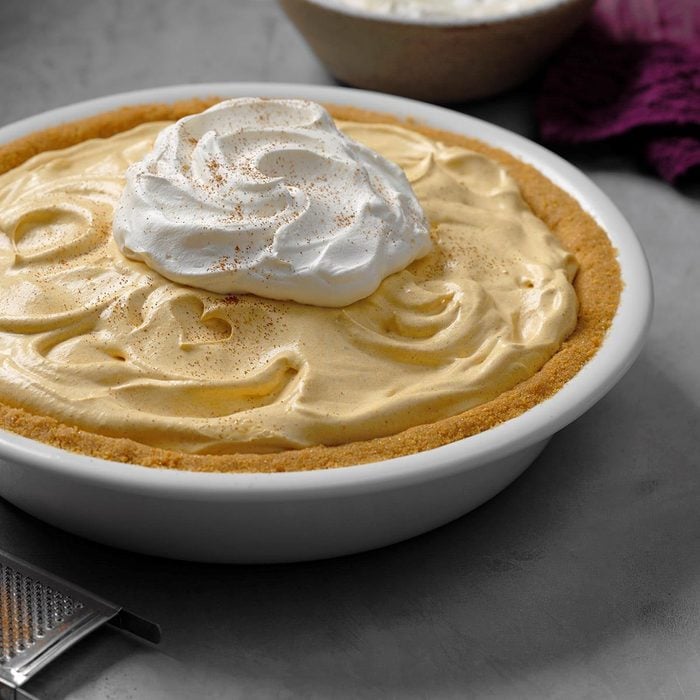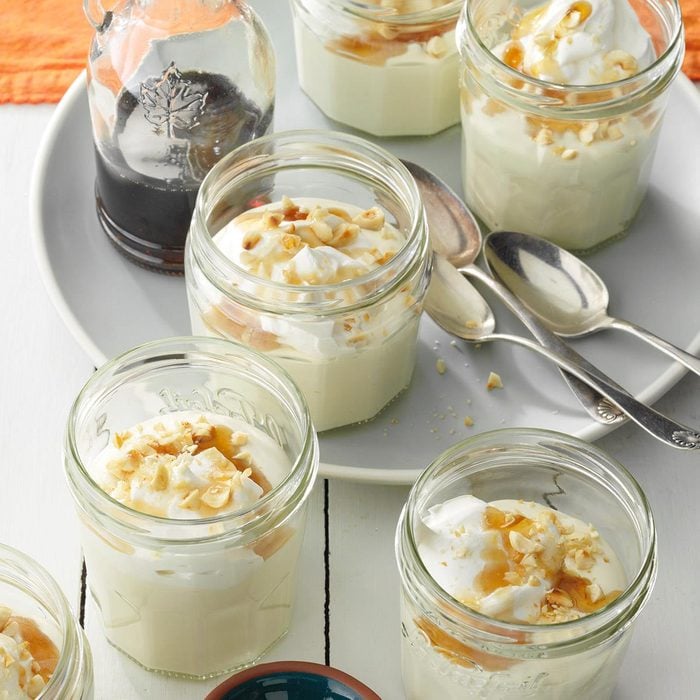Head to any pastry shop and you’re sure to see desserts created with layers of mousse. It’s also a popular dessert on restaurant menus and often a key ingredient in The Great British Baking Show challenges. So what is mousse? There’s a hint in the name itself, a French word meaning “foam.”
What Is Mousse?
Mousse is set apart from other look-alike desserts by its texture, which is light and airy. This is achieved with whipped egg whites, which hold trapped air bubbles and have lots of volume. (Just like when making meringue.) Mousse can also be made by beating heavy cream to create air-filled whipped cream.
The whipped egg whites or whipped cream are carefully folded with ganache, pureed fruit or custard, then chilled until set. The air bubbles remain suspended in the mousse, but the structure is firm enough to be molded or sliced. Other ingredients may help, too—such as cocoa butter in chocolate mousse, which becomes firm once chilled. Have you tried peanut butter mousse?
Mousse vs. Pudding
Pudding is another rich, creamy dessert but the texture is heavier than that of mousse. It’s made by cooking milk and flavorings with a starchy thickener like cornstarch or tapioca. It starts to stabilize on the heat and becomes thick and dense once chilled. Mousse, on the other hand, is lighter and uncooked.
Mousse vs. Ganache
While mousse can be made in a variety of flavors, ganache is always made from chocolate. Dark, milk or white chocolate is melted in warm cream and whisked until smooth. Depending on the ratio of chocolate to cream, ganache can be pourable, spread like frosting or shaped into candy. Ganache is rich and dense; since the mixture can’t trap and hold air bubbles, it doesn’t have the lightness of mousse.
How to Use Mousse
Mousse is a surprisingly versatile confection. You can serve is simply, in a dish with a dollop of whipped cream. (Like our simple Lemon Mousse.) You can also use mousse to create other desserts:
- Spread mousse between cake layers instead of frosting
- Make a layered torte from two or three flavors of mousse
- Spoon mousse into pie crusts and mini tart shells or use it to fill cream puffs
- Assemble parfaits or trifles with mousse, fresh fruit and cake or cookies.
When used as a filling in cakes and other desserts, chilling is an important step so that the mousse will be stable and hold its airy texture. Mousse can also be frozen to create ice cream-like desserts with a light, smooth texture, like this Frozen Margarita Mousse.
Ready to give this decadent dessert a try? Start with our easy guide on how to make mousse. Then, find inspiration in our collection of mousse recipes.
Indulgent and Irresistible Mousse Desserts
Semisweet Chocolate Mousse
A friend shared this rich velvety
chocolate mousse recipe with me. I love to cook and have tons of recipes, but this
decadent chocolate dessert is a favorite. Best of all, it's easy to make. Use a
hand mixer to make whipping the cream fast. —Judy Spencer, San Diego, California
Go to Recipe
First time trying this decadent dessert? Here's
how to make mousse.
Simple Lemon MousseThis classic, simple lemon mousse recipe is the refreshing dessert you need. Serve it with fresh fruit,
homemade whipped cream or eat it alone. —
Taste of Home Test Kitchen
Raspberry MousseThis creamy, smooth raspberry mousse recipe from our Test Kitchen is a refreshing finale to any summer meal. —Taste of Home Test Kitchen
Cappuccino Mousse TrifleThis is the easiest
trifle I've ever made, yet it looks like I spent time on it. I like to pipe whipped topping around the edge of the bowl, grate chocolate in the center and sprinkle with cinnamon. It gets rave reviews. —Tracy Bergland, Prior Lake, Minnesota
Elegant White Chocolate MousseSimply elegant is a fitting description for this smooth treat. Whipped cream teams up with
white chocolate to make this easy recipe extra special. —Laurinda Johnston, Belchertown, Massachusetts
Frozen Margarita MousseWho doesn't love a frozen margarita? This creamy frozen mousse combines ready-to-drink margarita mix and whipped topping (you could use this
whipped topping substitute instead). It's easy to put together and the freezer does all the work. Garnish with additional crushed pretzels and kosher salt to enhance the sweet and salty flavor. —Debbie Glasscock, Conway, Arkansas
Vegan Chocolate MousseMy son is allergic to dairy and eggs, so I created this silky
vegan chocolate
mousse recipe that he could enjoy. It's also gluten-free and grain-free. If you're having company over, it can be prepared the night before and stored in the refrigerator. —Sarah Meuser, New Milford, Connecticut
Triple Chocolate Mousse TorteWhen it's too hot to bake something sweet but you're craving different
types of chocolate, my chocolaty mousse tart is all you need. Stack up the layers any way you like. —Samantha Hernandez, Vacaville, California
Fritters with Lemon Mousse and StrawberriesDeep-fried fritters are wonderful on their own, but they become over-the-top amazing with a creamy lemon mousse and sweet strawberries. Raspberries and blueberries yield equally good results. —Shannon Bell, Woodstock, Georgia
Pumpkin MousseIf you've had your fill of pumpkin pie, this cool and creamy pumpkin mousse is perfect for you. Its light and fluffy texture won't make you feel "stuffed" after your favorite turkey dinner. —Taste of Home Test Kitchen, Milwaukee, Wisconsin
Vanilla White Chocolate MousseI needed a quick dessert for my daughter's bridal shower, and a co-worker gave me this vanilla mousse recipe. It's so pretty with almonds and raspberries on top. —Marina Castle, Canyon Country, California
Pumpkin Mousse TrifleYou can speed up this recipe by using a store-bought pound cake or baking and freezing one ahead of time. The sugared pecans can also be prepared in advance and stored in an airtight container.—Becky McClaflin, Blanchard, Oklahoma
Chocolate-Avocado MousseI have rheumatoid arthritis and I follow a special diet to help manage the symptoms. This pudding is simple to make, tastes heavenly and helps reduce inflammation. I like it frozen, too. —Kelly Kirby, Mill Bay, Nova Scotia
Chocolate Lover's Mousse TorteWith layer after luscious layer of creamy filling and cake, Chocolate Lover’s Mousse Torte proves irresistible every time. —Brenda Fisher, Stella, Missouri
Butterscotch Pumpkin MousseGuests savor every creamy, spoonful of this spiced autumn dessert. It tastes so good, no one guesses that it's actually low in fat. —Patricia Sidloskas, Anniston, Alabama. Craving for more? Learn how to make
peanut butter mousse.
Orange Chocolate Mousse Mirror CakeA shiny, mirrorlike orange glaze covers a
chocolate mousse cake to create a delicious showstopping dessert your guests will be talking about for weeks to come.—Matthew Hass, Franklin, Wisconsin
Cherry Almond Mousse PieTreat your loved ones to a luscious pie with chocolate, cherries and nuts in a creamy vanilla mousse. It's a sweet yet refreshing dessert. —Dorothy Pritchett, Wills Point, Texas
Frozen Pumpkin Mousse PieThe fluffed filling in this mouthwatering pie forms beautiful peaks and is nutmeg-colored. Rich and creamy, this popular dessert tastes so good with its buttery
graham cracker crust. —Sheila Bradshaw, Powell, Ohio
Maple MousseI love to make this dessert with
maple syrup produced in our area. For a change from heavier cakes and pies, it’s a refreshing ending to a holiday meal.
Key Lime Mousse CupsLight, lovely and laced with a splash of tart key lime juice, these fancy little phyllo cups are so refreshing served as an after-dinner dessert treat...and they take just minutes to whip up! —Suzanne Pauley, Renton, Washington
Lemon-Lime MousseFor a light and refreshing dessert after any meal, try this tangy citrus treat. —Kathryn Anderson, Wallkill, New York.





















